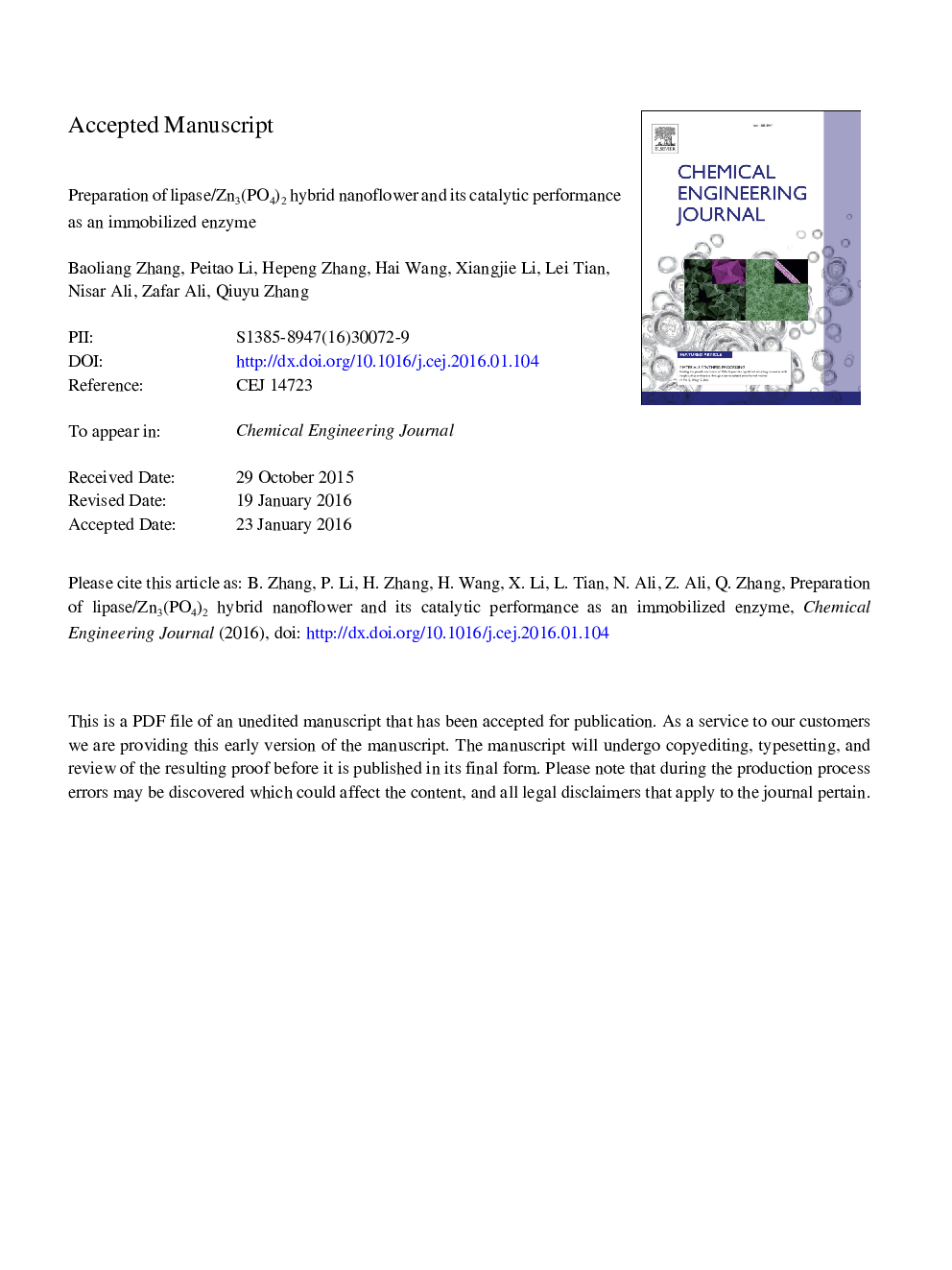| Article ID | Journal | Published Year | Pages | File Type |
|---|---|---|---|---|
| 6582014 | Chemical Engineering Journal | 2016 | 37 Pages |
Abstract
A facile and rapid method is reported in this paper to prepare a novel immobilized enzyme named lipase/Zn3(PO4)2 hybrid nanoflower. The growth mechanism of the nanoflower has been studied in detail and can be described as the following four steps: crystallization and coordination, in-situ precipitation, self-assembly, size growth. Addition amount of lipase, reaction temperature and stirring form affect the morphology and lipase content of the hybrid nanoflower. Besides, the catalytic performance of lipase/Zn3(PO4)2 hybrid nanoflower was investigated and the optimal catalytic conditions have been found. The maximum enzyme activity was 855 ± 13 U/g. In comparison with the free lipase, the enzyme activity increment of hybrid nanoflower is 147%. Meanwhile, the unique nanostructure makes lipase/Zn3(PO4)2 hybrid nanoflower an excellent operational stabilizer. The results indicate that the well-designed materials should be useful in industrial enzyme catalysis.
Related Topics
Physical Sciences and Engineering
Chemical Engineering
Chemical Engineering (General)
Authors
Baoliang Zhang, Peitao Li, Hepeng Zhang, Hai Wang, Xiangjie Li, Lei Tian, Nisar Ali, Zafar Ali, Qiuyu Zhang,
